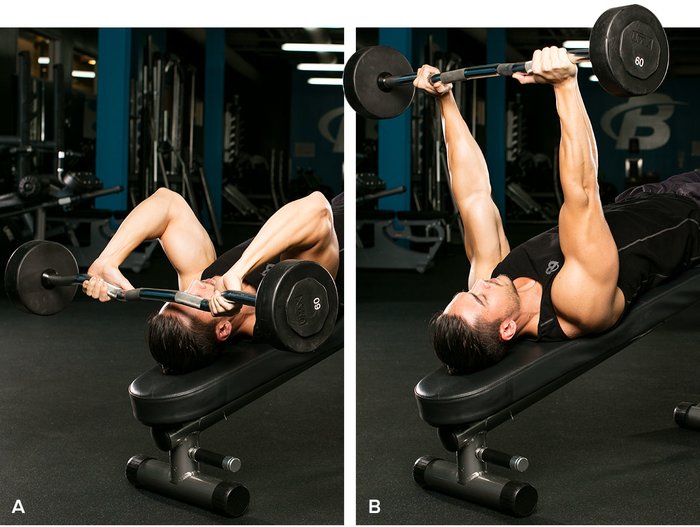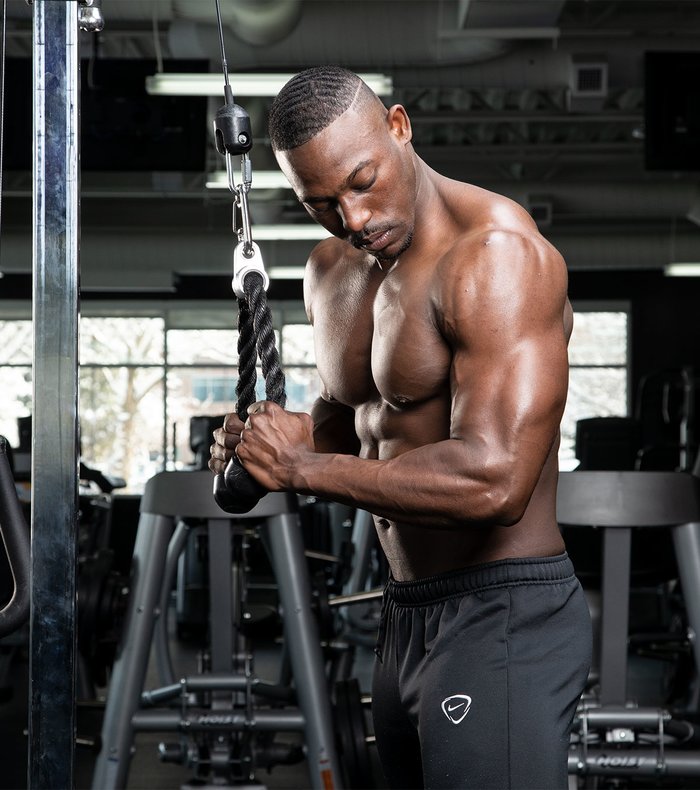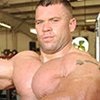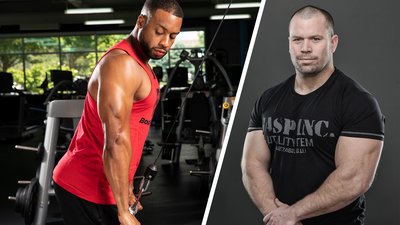Q: I'm a powerlifter who wants to increase my bench press. I know triceps strength is crucial, but how can I train my triceps hard with isolation exercises without hurting my elbows?
First of all, you're right: Strong triceps are crucial to a strong bench press! Second of all, you're right again: You don't need to turn your elbows into a pair of sacrificial lambs to beef up your tris. I know that because I did it myself and ended up having elbow surgery. Since then, I've learned how to train triceps in a way that doesn't produce elbow pain. Several of my athletes have gone on to set world records for the bench.
Take what I learned about working the tris and implement the following strategies to build world-class triceps strength without wrecking your elbow joints.
Start with a warm-up
The elbow is a vulnerable joint, so you must warm them up before you start training the triceps. Dynamic warm-ups are great, but you also have to warm-up with the exercise you're training. Let's say that after you bench, you perform decline barbell triceps extensions with 40 pounds in each hand. If so, warm up with 20 pounds in each hand for a set of 12, then move up to 30s for a set of eight. (If it hurts your elbows to do decline barbell triceps extensions the traditional way, use a rope attachment instead for a pain-free, continuous-tension exercise.)
If extensions are the first elbow exercises in your training, perform an additional warm-up set or two. To find the right combination of warm-up sets, reps, and weights, experiment. See what works best for you. Always be mindful of the climate you're training in. If you're in a Texas gym in the middle of summer, you probably won't need to warm-up quite as hard as you would in an unheated garage in Alaska in January.

Don't go to technical failure
Always ask yourself: What is the risk-to-benefit ratio of a given exercise? Is the potential growth you might get from doing an extra 5 reps worth the risk of injury? The answer is "No!" Lose your form and your injury risk skyrockets. You also shift the stress to another muscle and away from your target muscle, making the isolation exercise pretty pointless. Stop short of technical failure. When you start to lose form due to fatigue, end the set. Live to fight another day!
Train your mind-muscle connection
As a powerlifter, your objective on the bench press is to move the barbell from point A to point B as forcefully as possible, and with the best technique possible. In this scenario, the focus is rightly on the movement of the barbell. With isolation exercises such as triceps extensions, the focus needs to be on the muscle itself. You develop that focus by building your mind-muscle connection.
When your purpose is to work your triceps to improve your bench, here's how you can improve your ability to intentionally focus on the triceps:
- Always initiate a triceps isolation exercise by contracting the targeted triceps. If you can't start the movement by connecting with your triceps, chances are you won't fully engage them during the exercise.
- Adding an accentuated negative to your triceps workout helps you mentally connect with them. If you're doing a skullcrusher, add in a steady-pace, 5-second negative to each rep.
- If you're having trouble mentally connecting with your triceps, isometrically contract them as hard as possible for 6 seconds prior to starting the set. Once you start to feel them, you can continue to focus on them as you do the exercise.

If, at any point, you feel like you can't make the mind-muscle connection, stop the set, refocus your mind, and start again.
Liberate yourself with chains
In Plato's Allegory of the Cave, the cave is a symbol of the world and the prisoners are those who inhabit the world. In his story, the prisoners are shackled to the wall of the cave, the chains representing ignorance that interferes with the prisoners' ability to see the truth.
In the real world, chains—or bands—can actually be a source of liberation and learning. For example, when you add chains to an EZ-curl bar during triceps extensions, you can move more weight while putting less stress on your elbows. Seems like a paradox, and yet, it's true!
At the top of the movement, where you are strongest, you face the most resistance because you're pulling the chains up off the floor. As you lower the bar to perform the movement, the resistance lessens as the chains unload their weight link by link on the floor. Where you and your elbows are in their weakest and most vulnerable position, the resistance is the lightest.
When you're lifting, the weight you use is dictated by how much you can move through the hardest part of the exercise. When you use chains, though, you can overload the entire movement. Bands follow the same principal, and can also be used for exercises like push-downs.
With proper triceps training, you can achieve a huge bench press without nagging elbow pain. Train them incorrectly, though, and you may find yourself at your local orthopedic surgery center. If you want those big bench numbers, you need to train hard, but train smart!



